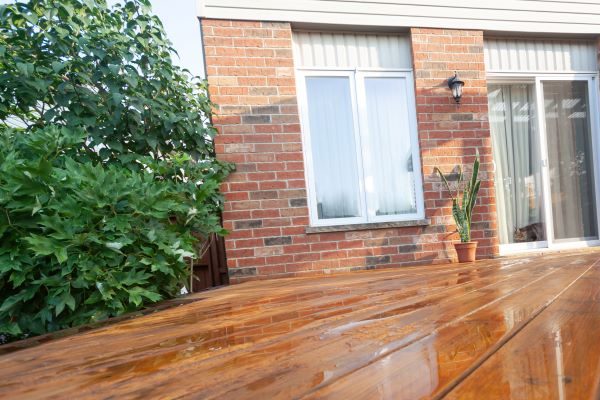Investing in a new wooden deck is a significant enhancement to any home, offering a space to relax, entertain, and enjoy the outdoors. However, the initial investment is only the beginning. Proper maintenance is crucial to ensure the deck’s longevity, safety, and appearance. Neglecting maintenance can lead to a shortened lifespan, structural issues, and potential hazards.
The Lifespan of Wood Decks
Wood decks are a popular choice due to their natural beauty and versatility. The lifespan of a wood deck can vary widely, typically ranging from 10 to 30 years for untreated wood and up to 50 years for treated wood. This variation is influenced by several key factors:
- Type of Wood: Hardwoods such as cedar, redwood, and tropical hardwoods are more durable and resistant to decay and insects compared to softwoods like pine.
- Climate: Exposure to harsh weather conditions, including heavy rainfall, snow, and intense sunlight, can accelerate the wear and tear on your deck.
- Maintenance Routine: Regular cleaning, sealing, and repairs are essential for preserving the deck’s condition and extending its lifespan.
- Usage: The level of foot traffic, the presence of outdoor furniture, and pets can all contribute to the deck’s deterioration over time.
Signs It’s Time for Repair or Replacement
Before undertaking maintenance, it’s important to assess your deck for signs that it may need repair or replacement:
- Rotting Wood: Soft spots and visible decay are indicators of moisture damage.
- Loose or Broken Boards: These can pose safety hazards and compromise the deck’s structural integrity.
- Discoloration and Splintering: Prolonged exposure to UV rays and weather can cause wood to splinter and fade.
- Rusty Nails and Screws: Corroded fasteners can weaken the deck’s integrity and lead to further damage.
Cleaning Your Wood Deck
Regular cleaning is vital to maintain your deck’s appearance and health. Here’s a detailed guide on how to clean your wood deck:
- Clear the Deck: Remove all furniture, plants, and other items from the deck.
- Sweep Away Debris: Use a broom to clear leaves, dirt, and dust from the surface.
- Apply Cleaner: Mix a wood deck cleaner with water according to the manufacturer’s instructions and apply it to the deck.
- Scrub the Surface: Use a stiff-bristle brush to scrub the wood, paying special attention to stained and moldy areas.
- Rinse Thoroughly: Use a garden hose to rinse off the cleaner, ensuring no soap residue remains.
For stubborn stains, a paste made from baking soda and water can be applied and scrubbed in. For mold or mildew, a solution of one part vinegar to three parts water can be applied, left to sit, and then scrubbed and rinsed away.
Sealing and Staining
Sealing and staining are among the best ways to maintain your deck. These treatments protect against moisture, UV rays, and general wear. When choosing a product, opt for a clear or semi-transparent sealant that offers strong water resistance, and a deck stain that complements your home’s exterior and provides UV protection.
To apply, ensure the deck is clean and completely dry. Use a brush, roller, or sprayer to apply an even coat, following the wood grain to avoid streaks. Allow the stain or sealant to dry fully before using the deck.
Seasonal Maintenance Tips
Adapting your maintenance routine to the changing seasons is essential for keeping your deck in top condition:
- Winter: Thoroughly clean the deck, inspect for damage, and cover or store outdoor furniture to protect it from the elements.
- Spring and Summer: After the winter, inspect the deck for any damage and make necessary repairs. Deep clean the deck to remove dirt and mildew accumulated over winter, and reapply sealant or stain if the protective coating shows signs of wear.
Protecting from Weather Damage
To preserve your deck from weather damage, use umbrellas, pergolas, or awnings to shield it from excessive sun exposure. Ensure the deck is properly sealed to repel water and prevent rot.
Preventive Measures
Taking proactive steps can significantly reduce the likelihood of future damage and keep your deck looking great for years to come. Regular inspections should be performed to identify and address issues early. Look for signs of wear, loose fasteners and boards, and potential hazards. Consider using pads under furniture legs to prevent scratches and dents, and place planters on stands to allow airflow and prevent moisture buildup.
Conclusion
Preserving a wood deck doesn’t have to be a daunting task. By being mindful of the placement of furniture and decor, and by investing in regular cleaning, sealing, and staining, you can significantly reduce wear and extend the life of your deck. With proper care, your wooden deck can remain a beautiful and functional part of your home for decades to come.


